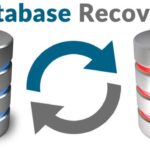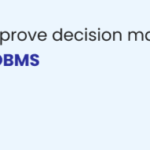Understanding the importance of database indexing for speed reveals a crucial aspect of database management that can drastically enhance performance. In today’s data-driven world, the efficiency of data retrieval has become paramount, and indexing serves as the backbone of this efficiency, enabling faster access to information. As databases grow in size and complexity, the need for effective indexing strategies becomes increasingly apparent, promising a significant boost in operational speed and user experience.
This discussion will delve into the critical role of database indexing, exploring the various types of indexes available, how they work, and best practices to implement them effectively. From the mechanics of indexing to advanced techniques, understanding these concepts is essential for any database administrator or developer looking to optimize their systems for speed.
Importance of Database Indexing
Database indexing plays a vital role in optimizing the performance of database management systems. It serves as a mechanism to enhance data retrieval speed, making it a fundamental aspect of database architecture. When properly implemented, indexing can lead to significant improvements in query efficiency, ultimately impacting the overall user experience.The effectiveness of database indexing lies in its ability to reduce the amount of data that needs to be scanned during a query.
By creating a structured reference to the data, indexes allow the database to locate and access the required information more swiftly. This not only minimizes response times but also decreases the load on system resources, which is especially important in high-transaction environments.
Impact of Indexing on Data Retrieval Speed
The impact of indexing on data retrieval speed cannot be overstated, particularly in scenarios involving large datasets. Without indexing, a database must perform full table scans, which can be time-consuming and resource-intensive. The introduction of indexes alters this dynamic, allowing for rapid access to needed data points.Consider the following points that illustrate the advantages of indexing:
- Faster Query Performance: Indexes significantly speed up query execution. For instance, retrieving records from a table containing millions of rows can take seconds without an index, while an indexed query can return results in milliseconds.
- Optimized Resource Usage: By minimizing the number of records that need to be examined, indexes reduce CPU and memory usage, allowing more queries to run concurrently.
- Improved Sorting and Filtering: Indexes facilitate efficient sorting and filtering operations, which are common in database queries. This means users can quickly retrieve specific results based on their criteria.
Scenarios Where Indexing Enhances Speed
Certain scenarios exemplify the transformative effect of indexing on database speed. Understanding these situations can help database administrators make informed decisions about when and how to implement indexes.Key scenarios include:
- High-Volume Transaction Systems: In applications like e-commerce or banking, where numerous transactions occur simultaneously, indexing can ensure that data retrieval remains swift even under load.
- Reporting and Analytical Queries: Indexing is crucial for generating reports that involve complex queries on large datasets, as it allows for quicker data access and analysis.
- Frequent Search Operations: In databases that support search functionality, such as user directories or product catalogs, appropriate indexing can drastically reduce the time taken to locate specific entries.
“In the world of database management, the right index can mean the difference between a query taking minutes to execute and it completing in seconds.”
Types of Indexes
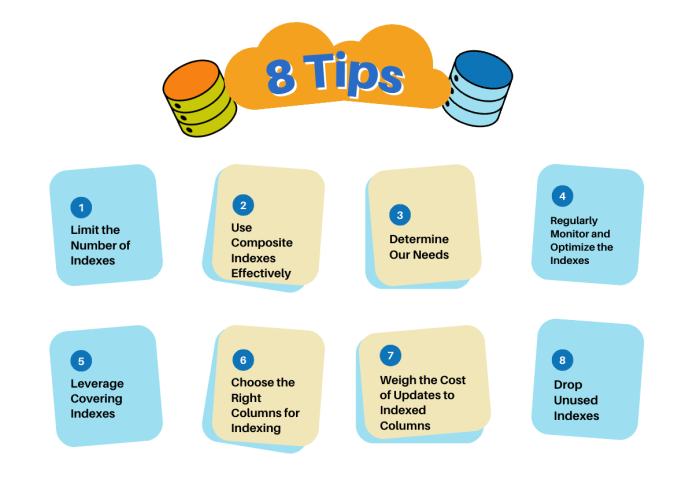
Database indexing serves as a critical mechanism to enhance query performance by enabling rapid data retrieval. Different types of indexes are designed to cater to varying use cases, providing unique advantages and challenges. Understanding these types aids database administrators and developers in selecting the most effective indexing strategy for their specific needs.
Data visualization plays a pivotal role in transforming complex data into actionable insights. Understanding the importance of data visualization in business intelligence allows stakeholders to grasp trends and patterns effortlessly. By utilizing compelling visual representations, businesses can communicate their findings effectively and drive strategic decisions that lead to growth.
B-tree Indexes
B-tree indexes are among the most commonly used indexing structures in databases. They maintain sorted data in a balanced tree format, allowing for efficient searching, inserting, and deleting operations. B-trees can handle a wide range of queries efficiently, making them ideal for databases with frequent read and write operations.
- Example Use Case: B-tree indexes are particularly useful in scenarios where range queries are prevalent—such as retrieving records within a date range.
- Benefits: They provide logarithmic time complexity for searches, making them efficient for large datasets. The balanced nature of B-trees ensures that operations remain consistently fast.
- Drawbacks: B-trees can incur overhead during insertions and deletions, which might slightly slow down write operations, especially when the tree requires rebalancing.
Hash Indexes
Hash indexes utilize a hash table to store keys and their corresponding data. They provide extremely fast data retrieval for exact match queries, making them suitable for lookups where the search criteria are known precisely.
- Example Use Case: Applications like user authentication systems, where the username is hashed to quickly verify user credentials, benefit significantly from hash indexes.
- Benefits: Hash indexes offer constant time complexity for lookups, ensuring rapid data access when searching for exact matches.
- Drawbacks: They are not suitable for range queries, as the hash function does not maintain any order. Additionally, hash collisions can occur, which may lead to increased search times.
Full-text Indexes
Full-text indexes are specialized indexing structures designed for searching large text bodies. They allow for efficient querying of textual data, facilitating complex searches that include relevance ranking and natural language processing.
- Example Use Case: Content management systems and search engines often employ full-text indexes to enable users to perform searches across articles, blogs, or product descriptions.
- Benefits: They permit advanced text-search capabilities, such as phrase matching and proximity searches, significantly enhancing the user experience when searching for specific information.
- Drawbacks: Full-text indexes can consume substantial storage space and may require significant overhead for maintenance, particularly when dealing with large volumes of text data.
“The choice of index type can significantly impact the performance and efficiency of database operations, making it essential to analyze the specific use case requirements.”
How Indexing Works
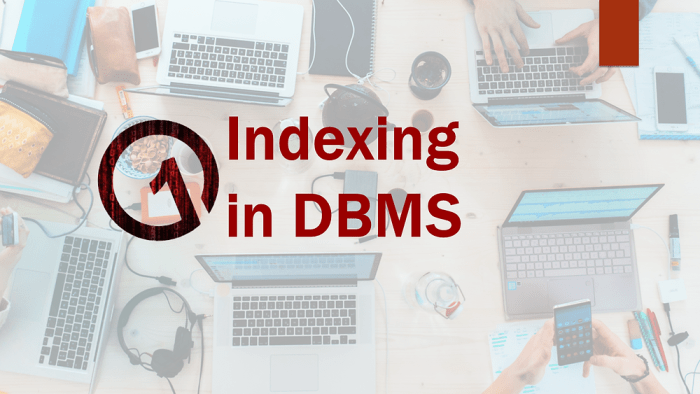
Indexing is a crucial mechanism that enhances the speed and efficiency of database operations. By creating a structure that allows quick data retrieval, indexing significantly reduces the time taken to process queries. Understanding the mechanics behind indexing is essential for optimizing database performance and ensuring seamless data access.The mechanics of indexing revolve around the creation of a data structure that allows the database management system (DBMS) to find and retrieve specific rows in a table without scanning the entire dataset.
This is primarily achieved through structures like B-trees or hash tables. When an index is created on a table column, the DBMS builds this auxiliary structure, which holds pointers to the actual data rows. The index itself is ordered based on the values in the indexed column, facilitating faster search operations.
Indexing Process Flow
The indexing process involves several key steps that contribute to its effectiveness in improving query performance. Each step plays a vital role in ensuring that the DBMS can quickly navigate to the required data. The following points Artikel the primary stages involved in the indexing process:
1. Index Creation
When an index is created on a table, the DBMS scans the specified column of the table to generate the index structure.
2. Data Organization
The DBMS organizes the indexed data in a way that allows for efficient searching. Typically, this involves sorting the data and creating a tree structure.
3. Pointer Mapping
The DBMS maintains pointers within the index that reference the corresponding rows in the original table. This allows for quick access to data based on index queries.
4. Update Mechanism
When the underlying data in the table changes (inserts, updates, deletes), the index must also be updated to reflect these changes, ensuring data integrity.
5. Query Execution
In today’s fast-paced business environment, the role of artificial intelligence in business intelligence cannot be overstated. AI technologies enhance data analysis, enabling organizations to make informed decisions quickly. As companies strive for efficiency, leveraging AI tools is crucial to stay competitive and harness valuable insights from vast amounts of data.
During query execution, the DBMS references the index instead of scanning the entire table, significantly reducing the time it takes to locate the desired rows.A flowchart illustrating the indexing process would typically consist of the following elements:
- Start with a data table.
- Create an index on one or more columns.
- Organize the indexed data into a data structure (e.g., B-tree).
- Maintain pointers to the original data rows.
- Execute queries that utilize the index for faster data retrieval.
Indexing interacts seamlessly with query execution plans, which are the strategies that the DBMS formulates to optimize query performance. When a query is executed, the DBMS evaluates the available indexes and decides whether to use them based on their effectiveness in reducing data access time. If an index is deemed beneficial, the DBMS will include it in the query execution plan, directing the search operations through the index rather than the full dataset.
This optimization not only accelerates the query response time but also enhances overall database performance.
“Effective indexing is the backbone of database performance, influencing query execution times and resource utilization.”
Through a well-implemented indexing strategy, databases can achieve remarkable improvements in speed and efficiency, ultimately resulting in enhanced user experiences and operational effectiveness.
Best Practices for Database Indexing: Understanding The Importance Of Database Indexing For Speed
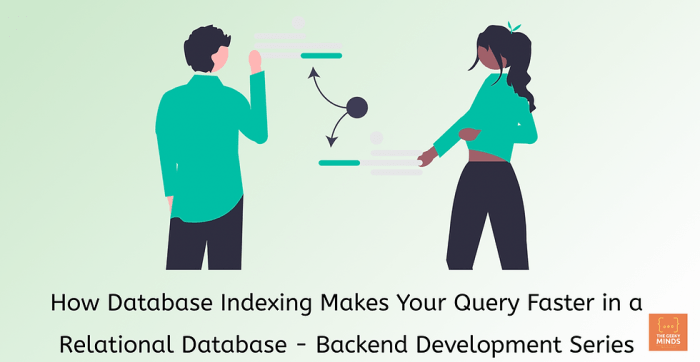
Implementing effective database indexing is essential for optimizing the performance of database-driven applications. Proper indexing can significantly reduce query response times, enhance the efficiency of data retrieval, and minimize the load on database resources. By following best practices, database administrators can ensure that their indexing strategy is both effective and sustainable.One of the foundational aspects of database indexing is understanding the design and usage patterns of the database.
Proper planning and execution can lead to substantial performance improvements. Below are some best practices to consider when implementing database indexing.
Key Best Practices for Indexing
Establishing a robust indexing strategy requires adherence to various best practices. These strategies help in maximizing query performance while keeping maintenance overhead to a minimum. Consider the following points when developing your indexing approach:
- Analyze Query Patterns: Regularly review the most frequently executed queries to identify which columns require indexing. Tools like query analyzers can help pinpoint slow-running queries.
- Use Composite Indexes Wisely: For queries that filter on multiple columns, composite indexes can greatly enhance performance. However, avoid excessive multi-column indexes that may slow down data modification operations.
- Limit the Number of Indexes: Each additional index consumes disk space and can slow down write operations. Strive for a balance between read and write performance by minimizing unnecessary indexes.
- Maintain Indexes Regularly: Periodic maintenance, such as rebuilding or reorganizing indexes, helps to eliminate fragmentation and ensures optimal performance over time.
- Consider Covering Indexes: Covering indexes that include all columns referenced in a query can improve performance by allowing the database to serve the query directly from the index without having to read the table data.
Common Mistakes to Avoid During Indexing, Understanding the importance of database indexing for speed
When implementing database indexing, certain pitfalls can undermine indexing efforts. Avoiding these common mistakes can prevent performance degradation and ensure efficient database operation.
- Over-Indexing: Creating too many indexes leads to excessive resource consumption and can severely impact the performance of insert, update, and delete operations.
- Ignoring Index Maintenance: Failing to regularly maintain indexes can result in fragmentation, which impacts performance negatively. Regularly scheduled maintenance is critical.
- Neglecting Index Statistics: Outdated statistics can lead to poor query optimization. Ensuring that statistics are up to date allows the query optimizer to make informed decisions.
- Using Non-Selective Columns: Indexing columns with low selectivity (i.e., columns with many duplicate values) may not provide any performance benefit and can slow down data modification.
Performance Tuning Techniques Related to Database Indexes
In addition to following best practices and avoiding common mistakes, certain performance tuning techniques can further enhance the effectiveness of database indexes. These techniques can provide tangible benefits in overall system performance.
- Monitor Query Performance: Utilize monitoring tools to track query performance metrics, allowing for timely adjustments to indexing strategies based on real-time data.
- Leverage Database-Specific Features: Many database systems offer tools and features specifically designed for indexing and performance tuning. Familiarize yourself with these options to maximize efficiency.
- Use Index Hints: In scenarios where the optimizer does not choose the most efficient index, using index hints can guide the query optimizer to the preferred index.
- Evaluate Index Usage Regularly: Regularly assess the effectiveness of existing indexes. If certain indexes are rarely or never used, consider dropping them to reduce maintenance overhead.
- Test Performance Changes in Staging: Before implementing indexing changes in production, test them in a staging environment to gauge their impact on performance without affecting end users.
“The right indexing strategy can transform the performance of a database, leading to swift data retrieval and enhanced user experience.”
Advanced Indexing Techniques
Advanced indexing techniques play a crucial role in optimizing database performance, particularly when dealing with complex queries and large datasets. While traditional indexing methods provide a good foundation for speeding up data retrieval, advanced strategies like composite indexing and partial indexing take optimization to another level. Understanding these techniques can significantly enhance the efficiency of database operations and improve overall application performance.
Composite Indexing
Composite indexing involves creating an index on multiple columns of a database table, allowing for more efficient querying when multiple fields are involved in the search criteria. This approach is particularly beneficial for complex queries that filter results based on multiple attributes, thereby reducing the need for extensive table scans.By designing composite indexes, database architects can create an indexed path to data that mirrors the most common query patterns.
For instance, consider a table containing user data with columns such as `first_name`, `last_name`, and `email`. A composite index on `last_name` and `first_name` will significantly speed up queries that search for a user by both names.
Partial Indexing
Partial indexing allows the creation of indexes on a subset of rows within a table based on specified criteria. This technique is especially useful in scenarios where the entire dataset is not frequently queried, and it helps in saving storage space while speeding up query execution for targeted data.For example, if there is a column `status` in an orders table, one might create a partial index on `status=’active’`.
This setup means that the index only contains entries for active orders, which can expedite searches for current orders without burdening the database with inactive records.
Designing Indexing Solutions for Complex Queries
Designing effective indexing solutions requires a deep understanding of the queries that will be executed against the database. This involves analyzing the query patterns and determining which columns are most frequently used in filtering, sorting, and joining operations. When dealing with complex queries, the following strategies can be adopted:
1. Identify Key Columns
Focus on the columns that appear most frequently in WHERE clauses or JOIN conditions.
2. Use Composite Indexes
Implement composite indexes for queries that filter by multiple columns to ensure efficient data retrieval.
3. Leverage Partial Indexes
Create partial indexes on commonly queried subsets of data, especially in large tables.
4. Monitor Query Performance
Continuously analyze query performance and adjust indexing strategies as needed to adapt to changing data patterns and application demands.
Comparison of Traditional and Advanced Indexing Techniques
The following table highlights the key differences between traditional indexing methods and advanced indexing techniques. Understanding these differences can assist database administrators in choosing the most appropriate indexing strategy for their specific needs.
| Feature | Traditional Indexing | Advanced Indexing |
|---|---|---|
| Index Type | Single-column index | Composite and partial indexes |
| Performance Optimization | Basic query performance improvement | Enhanced performance for complex queries |
| Storage Space Usage | Higher due to full table indexing | More efficient; targets only relevant data |
| Query Flexibility | Limited to single-column queries | Supports multi-column and conditional queries |
| Maintenance Complexity | Lower | Higher; requires careful planning and monitoring |

